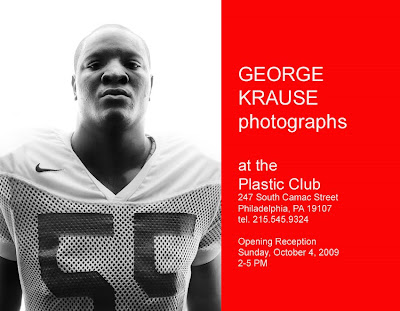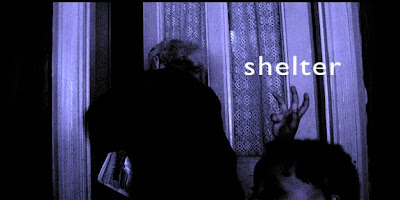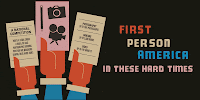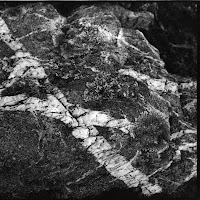 Untitled, (Photogram of a Woman)
Untitled, (Photogram of a Woman), Late 1950s
Sol Mednick (American, 1916 – 1970)
Gelatin silver print
11 x 10 3/8 inches Philadelphia Museum of Art, Gift of Miriam Mednick Rothman, 1982 Composites: Philadelphia
Composites: Philadelphia, 1964
Ray K. Metzker (American, born 1931)
Gelatin silver prints
Image: 12 7/8 x 12 7/8 inches (32.7 x 32.7 cm)
Purchased with the Contemporary Photography Exhibition Fund, the Alfred Stieglitz Center Restricted Fund, and the Alice Newton Osborn Fund, 1977 Here is the press release from the
Philadelphia Museum of Art for the current exhibit
Common Ground: Eight Philadelphia Photographers from the 1960's and 70'sExhibition Explores the Diverse Bodies of Work by Eight Philadelphia PhotographersThe 1960s became a critical period for photography in Philadelphia, as artists including
Emmet Gowin,
Will Larson, and
Ray K. Metzker came to teach in some of the city’s renowned art schools, bringing experimental approaches to the medium. The Philadelphia Museum of Art presents Common Ground: Eight Philadelphia Photographers in the 1960s and 1970s, an exhibition that explores the work made by these internationally acclaimed artists along with superb work by lesser-known figures, including some of their students, who pushed photographic experimentation to explore both the medium itself and the social and sexual politics of the era. In addition to highlighting eight strong bodies of work, the exhibition demonstrates the rich exchange of ideas that took place within the city's artistic community. It will be on view through January 31, 2010 in the Julien Levy Gallery at the Museum’s Perelman Building.
“The high concentration of students and young artists working in Philadelphia in the 1960s and ’70s created an atmosphere of vitality and openness that is evident in the work they produced,” Curator of Photographs Peter Barberie said. “Although the work is extremely diverse, there are some common themes that overlap and echo in interesting ways.” Barberie curated the exhibition along with Julia Dolan, the Horace W. Goldsmith Curatorial Fellow.
Sol Mednick was part of a generation of Philadelphia-trained photographers, including Arnold Newman and Irving Penn, who in the 1930s studied at the Philadelphia College of Industrial Arts with the legendary magazine editor Alexei Brodovitch. A successful commercial photographer, he founded the photography department at the Philadelphia College of Art (PCA), now The University of the Arts, in 1953 and was instrumental in creating a photographic scene in Philadelphia. Mednick not only mentored his younger peers – including Ray Metzker, whom he hired to teach at the school in 1962 – but enthusiastically absorbed their innovations.
Larson established the photography department at Temple University’s Tyler School of Art in 1968, while Gowin joined the staff of Bucks County Community College in 1971. Both brought an emphasis on formal experimentation as a means of exploring the potential of the photographic medium. Gowin’s skillful use of poses, gestures, and compositional elements enhance the sense of mystery and potency in his extended series of family portraits. Larson, in his 1969 series Fireflies, used an early version of the fax machine to combine images, sounds, typed text, and other data, resulting in powerfully abstract imagery.
Into this lively scene came a host of younger photographers, many also drawn by the numerous art schools as well as the city's openness to emerging talents.
David Lebe began his undergraduate studies at PCA in 1966 and taught there from 1972 to 1990.
Catherine Jansen came to Tyler as a graduate student in 1974.
Will Brown studied at the University of Pennsylvania with the photographer/filmmaker Rudy Burckhardt in 1966–67.
Carol Taback, who trained as a painter, turned to photography in 1977 when she began making photo-booth portraits.
Although their formal concerns and strategies sometimes overlap, these eight artists produced strikingly different work. Metzker, Mednick, Larson, and Taback all explored multiple- or time-lapse exposures. Lebe, Jansen, and Taback combined experimentation with personal and sometimes provocative content that reflected the times. Jansen approached to the history of women’s crafts and their traditional creative sphere, the home, from a feminist perspective, creating wall hangings and room installations based on domestic interiors. A number of prints are included from Lebe’s “Scribble” series, sometimes referred to as light drawings, in which the figures are outlined by a handheld flashlight and seem to radiate erotic energy. Taback used a photo booth to explore sequencing and visual patterns, while also underlining the voyeuristic qualities of the medium.
Of the artists in the exhibition, Brown was the only one to engage in street photography, the dominant mode of the period. His portraits of sparse or empty storefronts and street corners in his Queen Village neighborhood are subtle and evocative. Rather than composing a narrative his images form a body of discrete, momentary records of the city around him.
Related events
In conjunction with Common Ground, the Museum will host
“Café Night at Perelman: Philly Photographers” on Thursday, October 22, from 5 to 7 p.m. Visitors may enjoy a glass of wine in the Perelman Café, explore the exhibition and adjourn to the Museum’s Library for live readings by noted poet and professor Thomas Devaney, who will highlight exceptional passages by Philadelphia writers of the 1960s and 1970s. Tickets are $7 ($5 members) and are available online at: www.philamuseum.org or at 215-235-SHOW.
Related exhibitions in Philadelphia this fall include
Streets of Philadelphia: Photography 1970-1985 on view September 10 – November 21, 2009 at the Print Center; and
Next: Emerging Philadelphia Photographers, on view through November 29, 2009 at the Philadelphia Photo Arts Center.











 facing west
facing west facing east
facing east Philadelphia Pretzel Cart. early 1960's
Philadelphia Pretzel Cart. early 1960's






